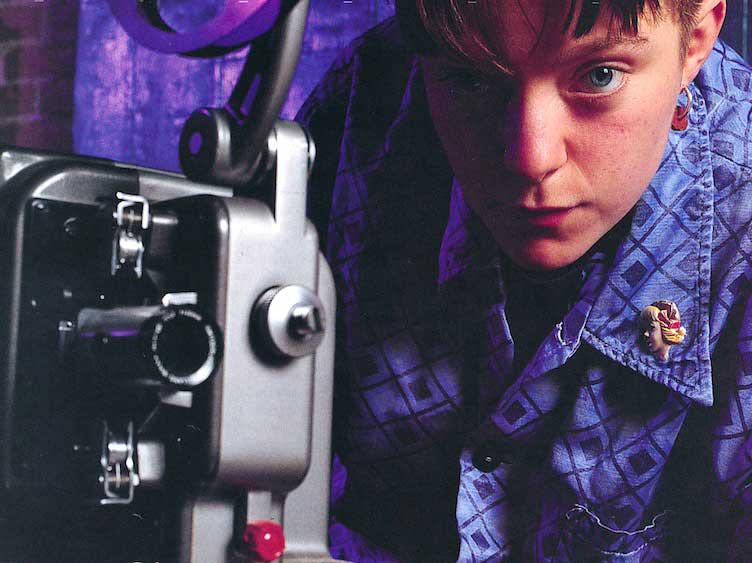Sadie Benning
Born in 1972, she was given the Fisher Pixelvision 2000 by her father, the film artist James Benning, for Christmas when she was 15. Actually designed as a toy video camera, easy to operate, always ready with projection films in the frame, it caught on less with children than with avant-garde artists.
Sadie's first works, such as Welcome to Normal or Jollies (both 1990), were basically illustrated monologues dealing with her sexual awakening in working-class Milwaukee. Most of the videos were shot in the bedroom overlooking a simple suburban street and were informed by typical adolescent angst. Stylistically raw and straightforward, they indulged in "confessional self-dramatisation", which later became Benning's trademark in a mature form. Benning's video search for sexual identity is entirely in the tradition of the psychodrama of a Maya Deren or a Kenneth Anger (Fireworks).
With extreme close-ups, she presents herself as a fragmented something made of eyes and lips, developing a personality that is strong and vulnerable, provocative and mischievous at the same time, while mixing her quirky, scribbled texts and magazine snippets with lots of TV and music snippets. Sadie Benning's early work is performance art and underground video rolled into one. (Jim Hoberman, Premiere Magazine)
Program
A New Year (USA 1989, U-matic, 4 Min.)
If Every Girl Had A Diary (USA 1990, U-matic, 6 Min.)
Jollies (USA 1990, U-matic, 11 Min.)
Girl Power (Part 1) (USA 1992, U-matic, 15 MIn.)
It Wasn't Love (USA 1992, U-matic, 20 Min.)
A Place Called Lovely (USA 1991, U-matic, 14 Min.)
German Song (USA 1995, U-matic, 6 Min.)
for more information see downloads
Eine Veranstaltung von sixpackfilm und DV8-Film
Organisation und Texte Brigitta Burger-Utzer und Barbara Reumüller
© image T. L. Litt

